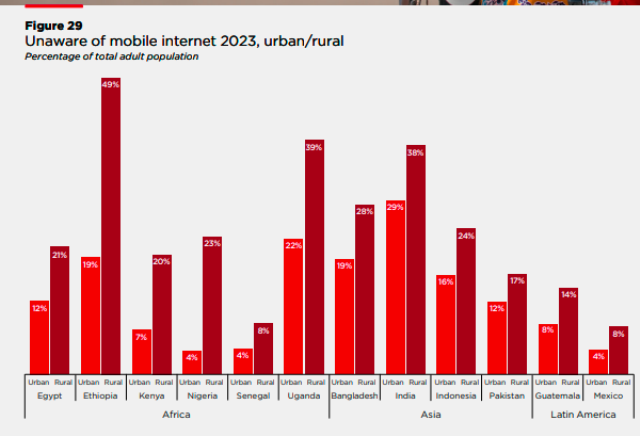A digital divide is emerging in the rollout and adoption of 5G, despite its rapid growth, the latest report from GSMA indicated.

By the end of 2023, the number of 5G connections worldwide surpassed 1.5 billion, making it the fastest-growing mobile technology. However, the spread of 5G remains uneven, particularly between high-income countries and low- and middle-income countries (LMICs).
Key Factors Contributing to the Digital Divide in 5G:
Coverage Disparity: In 2023, 5G coverage in high-income countries reached 89 percent, compared to 34 percent in LMICs. While there has been growth, this expansion has largely been driven by China and India. More than 100 countries, predominantly LMICs, had not launched 5G by the end of 2023.
Future Penetration Gaps: By 2030, it is forecasted that 5G penetration in LMICs will be around 55 percent, while high-income countries are expected to reach 120 percent. This disparity shows that many LMICs will continue to rely on 4G, or even 3G, creating a growing technological gap.
Cost of Devices: Affordability of 5G devices remains a significant barrier. In LMICs, the median price of the cheapest 5G device is between $100–200, while the median price for 3G/4G handsets is $50, which is already unaffordable for many. This cost discrepancy further slows 5G adoption in these regions.
Benefits for Users: For those with access to 5G, it offers significantly improved download speeds (around 230 Mbps, five times faster than 4G) and enables advanced services like fixed wireless access (FWA), which is expanding high-speed internet access to underserved areas in countries like Saudi Arabia and the U.S. However, widespread 5G benefits remain out of reach for many.
Challenges in Deployment: Even in markets where 5G adoption is higher, full deployment is incomplete. Most operators have not yet implemented 5G standalone (SA) networks, which are needed to unlock its full potential, including business-to-business (B2B) applications. Deployment is costly, and many operators are cautious due to low returns on investment.
Policymaker Focus on 4G: Given the slow progress in universal 5G adoption, 4G will continue to play a critical role, especially in regions like Sub-Saharan Africa, South Asia, MENA, and Latin America. It is projected that 3G and 4G will still account for over 60 percent of mobile broadband connections in these areas by 2030. Policymakers and the international community must continue to prioritize 4G expansion to bridge the digital divide.
While 5G offers immense potential and has grown rapidly, it is not yet bridging the global digital divide. Instead, it risks widening it, as LMICs lag in coverage, device affordability, and adoption. Bridging this gap will require sustained efforts to make 4G more widely available, and significant investments in 5G infrastructure, especially in regions that are at risk of being left behind.
